So let’s be clear about one thing. I am not the fastest knitter out there. I suffer from frequent bouts of startitis and I am easily distractable. I have two sweaters currently on the needles, one of which I started in the spring and one I started in the spring of …last year.
And yet, this sweater that I didn’t even think I’d be able to finish to the designer’s requested deadline – it just flew off the needles. Exactly one month after I cast on I was steam-blocking a finished object, and one month and one day after I cast on, I took my finished Forest Sweater out to to meet some evergreens.
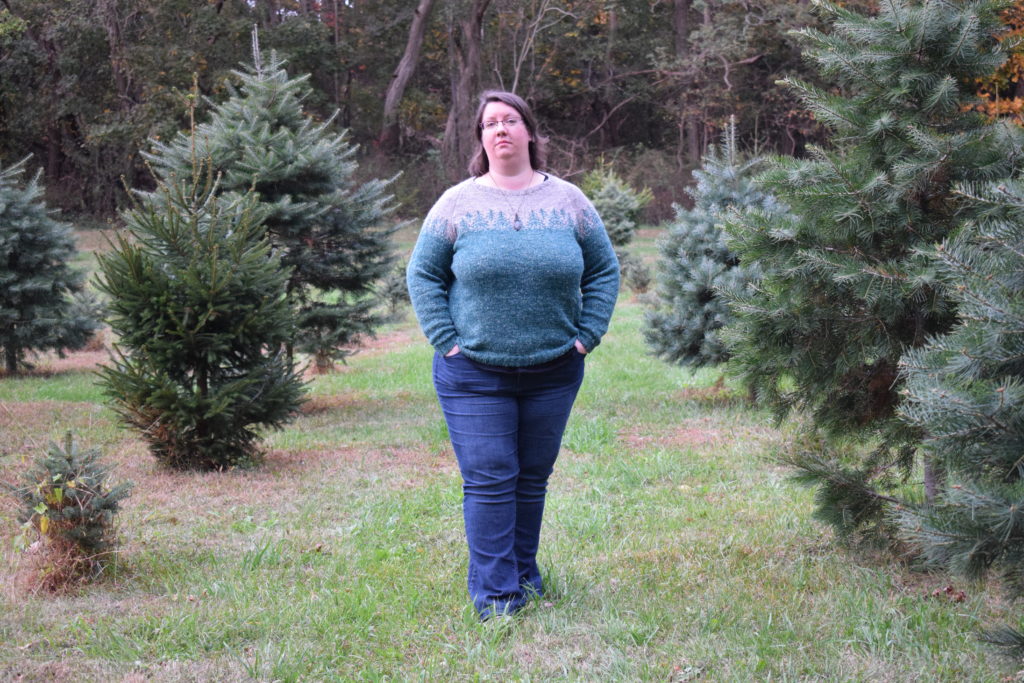
I cannot begin to tell you how happy I am with this sweater. I tried a new-to-me yarn (Cascade Eco+ Hemp), a new-to-me pattern, my first colorwork sweater, and my first sweater test knit. I’ve done a lot of colorwork, but it’s all been for accessories; this was the first time I did a colorwork project of this size. And it all worked out perfectly.
The Forest Sweater is a published pattern but I was testing for the upcoming expanded size release. It is a seamed raglan pullover sweater, knit bottom-up. I opted for the 55″ size, which gave me a good 6-7 inches of positive ease. I also slightly modified the sweater as written, opting to lengthen the body by three inches to my preferred sweater length, and I also added to the arms a bit, but I could have gone probably five rounds shorter for the sleeves and still been happy with the length. This pattern also calls for casting on and working in the round, but I didn’t have a circular needle long enough, so I knit the ribbing flat on a pair of ancient aluminum Boye straight needles and then joined in the round once I switched up to the larger needle for the body. It was easy enough to sew that quick seam once the sweater was done.
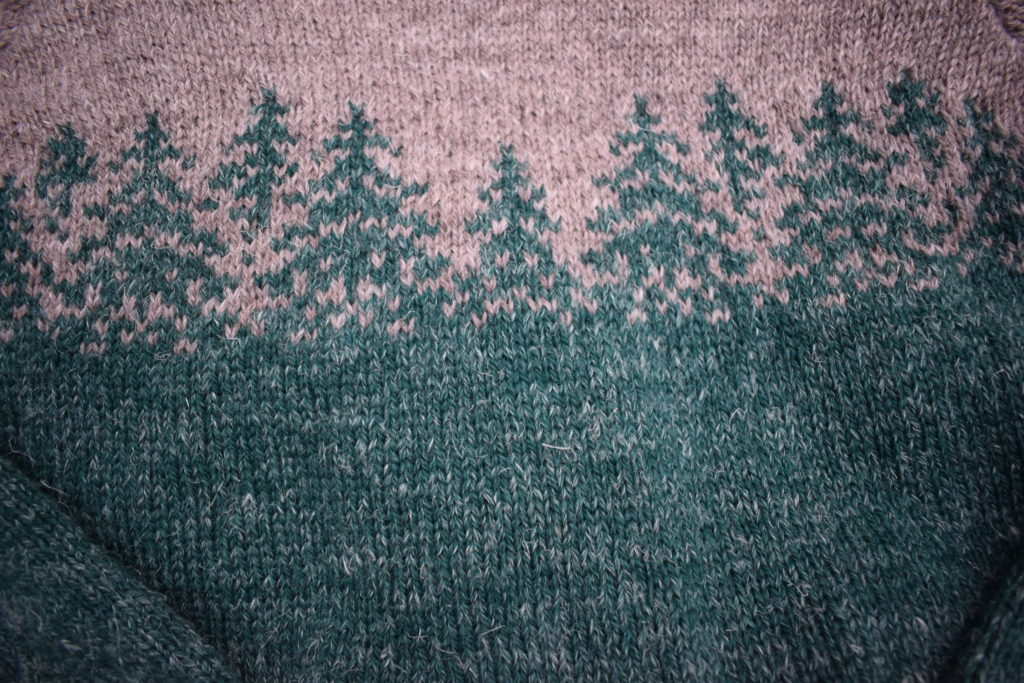
I did encounter a few challenges, mostly with managing the colorwork. Once you divide for the front and back and begin the colorwork charts, you’re looking at some extremely long non-repeating chart lines. Any sensible knitter would have put some stitch markers in to help them keep track, but I am apparently not very sensible and just powered through. After the first two or three rows it gets much easier to reference the stitches you’ve already worked to make sure you’re counting correctly, but for the first row or two I had to tink back a few times on each side.
The sleeves were much easier to do colorwork on, as they are much smaller charts. I made another change here. Natalie’s original pattern has two separate sleeve designs, both with the evergreen motif, but one with a little tent on one sleeve. It’s adorable …but I’m not much of a camper. So (with her blessing) I did both sleeves with the trees-only chart.
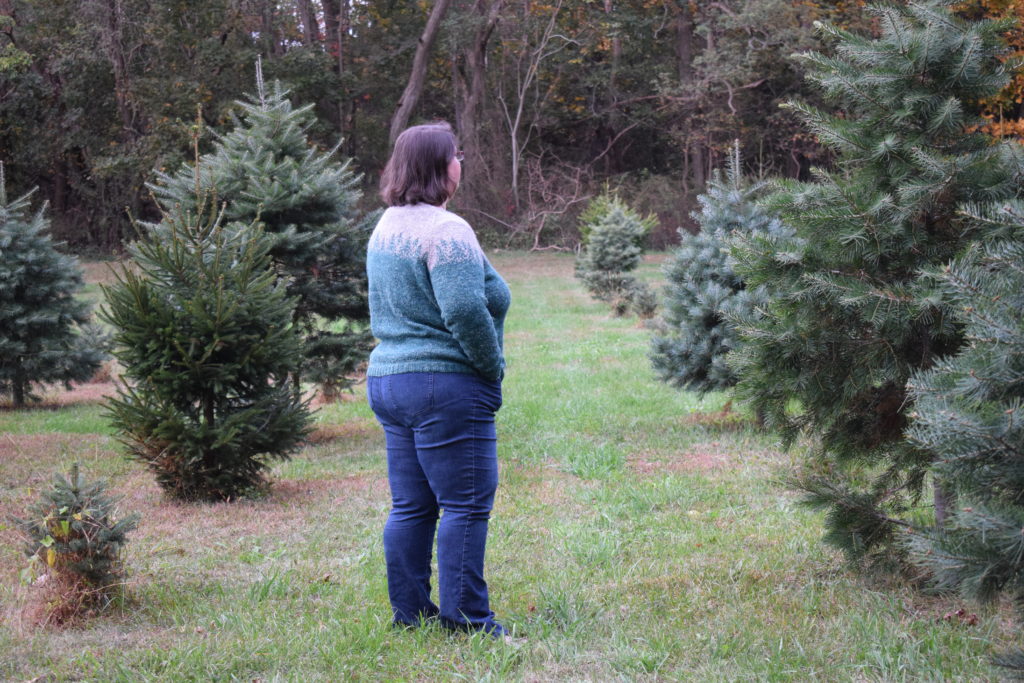
Seaming this turned out to be very pleasant, thanks to a virtual class I took last weekend during the 2020 NY Sheep & Wool festival: Crochet for Knitters with Pam Grushkin. My crochet skills are pretty haphazard, and I learned from Pam that I had been doing crochet seaming incorrectly (carrying the yarn over the seam). After reviewing with her, doing the seams on this sweater was a breeze.
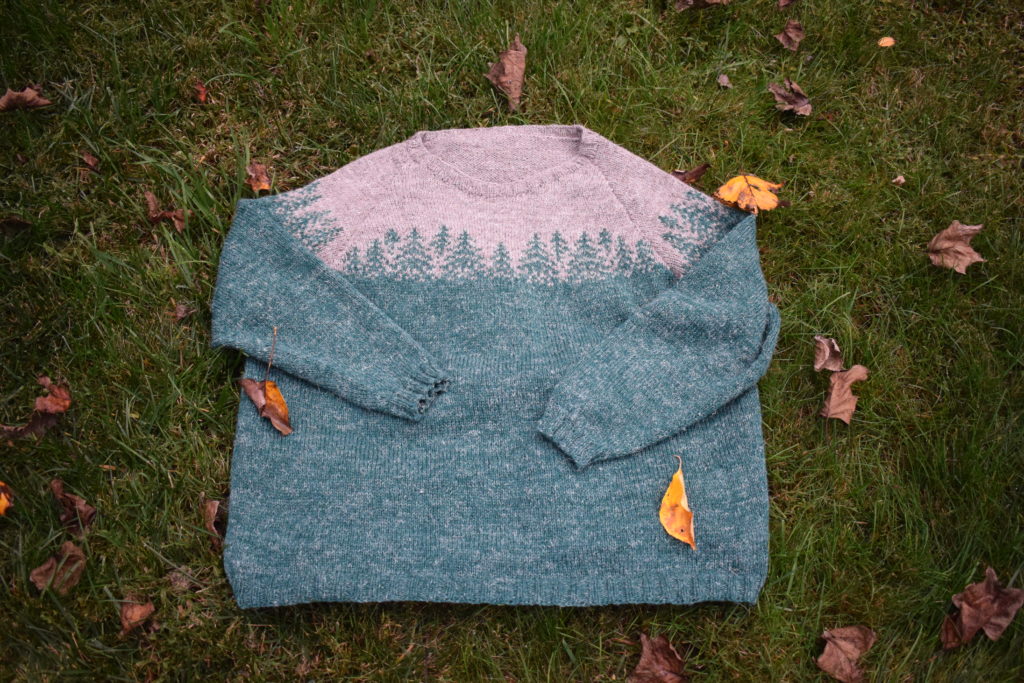
And finally, the yarn. I knit this project with Cascade Eco+ Hemp, a yarn I haven’t used before. I picked it for several reasons: the put-up is very economical (328 yards), it included the green and soft grey I wanted for my project, I’ve been curious about trying a hemp blend yarn, and since it was in stock at WEBS that meant their discount kicked in. (I haven’t used or bought Cascade for quite a few years now, but as I now understand the previous owner whose homophobic statements led me to avoid their yarns is now no longer involved in the company I decided to try it.) I was really happy with the yarn! It knit up exactly to gauge, it’s a nice lofty worsted spun that makes a cozy light fabric, and once knit up it has a surprisingly silky hand. The hemp creates a lovely marled appearance. I would say I’d buy it again, but I actually already have – more on that in a moment.
Would I do anything differently? Absolutely. I would knit the sleeves a bit shorter, and I would knit the body in the round and steek for the sleeves. And I’m going to try those changes, because my dad (the Christmas tree farmer) has been watching me knit this for the last month and put in a request early on for his own Christmas tree sweater. So I ordered some more of the Eco+ Hemp yarn for his sweater – but with white instead of grey, at his request. Dad and I are pretty similarly sized so he tried mine on and it fit him pretty well, but he commented he’d like a little more space in the lower arm, so I may jump up to the next size for the arms.
I am looking forward to coming back to this in a month or two, once I’m done with Christmas knits for my niflings, and I think that more than anything else tells you what a delightful experience this was to knit, but just in case let’s reiterate how hard it was to put this down: I finished this in one month. Natalie’s pattern is clear and well laid out, and test knitting this was a joy. I highly recommend the pattern if you’re looking for some coziness this winter.
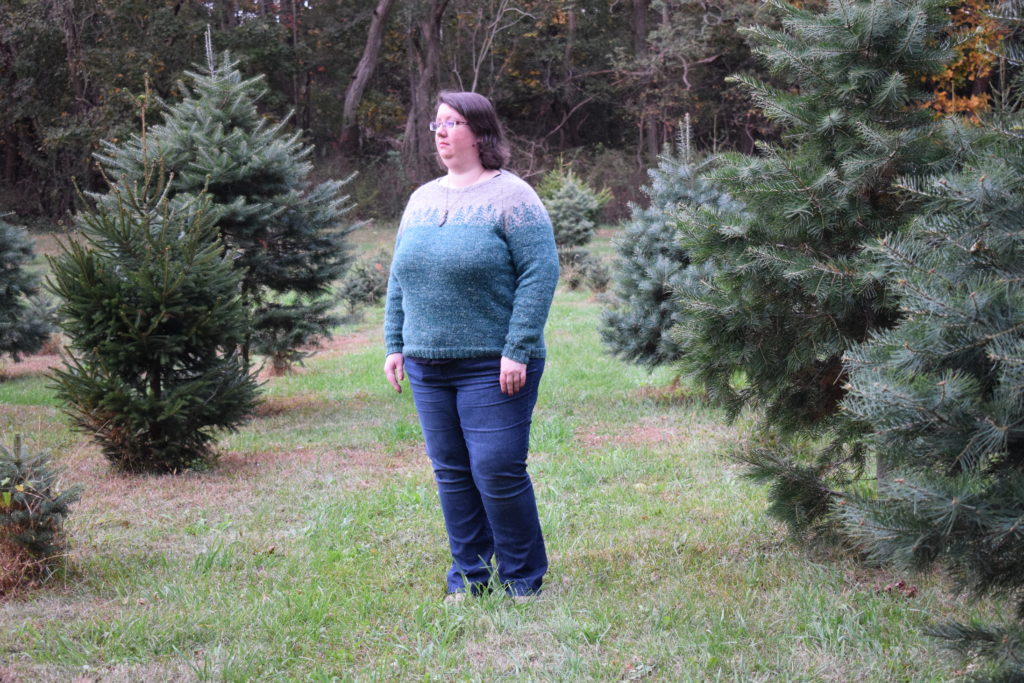
Details:
Forest Sweater: Etsy or Ravelry (please use caution when clicking through to Ravelry links)
Yarn: Cascade Eco + Hemp in 11 Jasper (green) and 2 Antique (gray), purchased from WEBS
Needles: US 3 straights and US 5 circulars for body; US 3 and US 5 DPNs and US 5 circs for sleeves
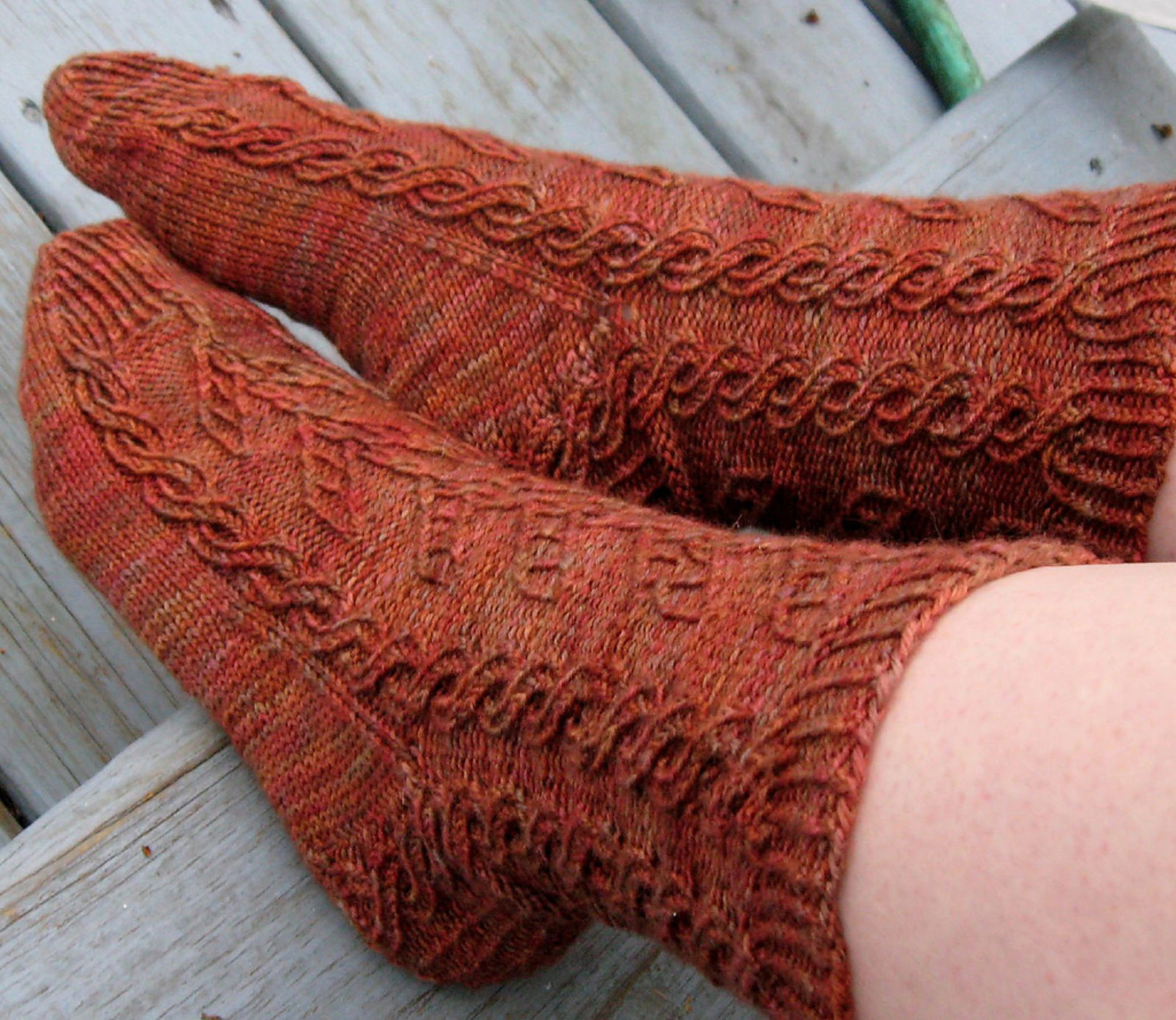
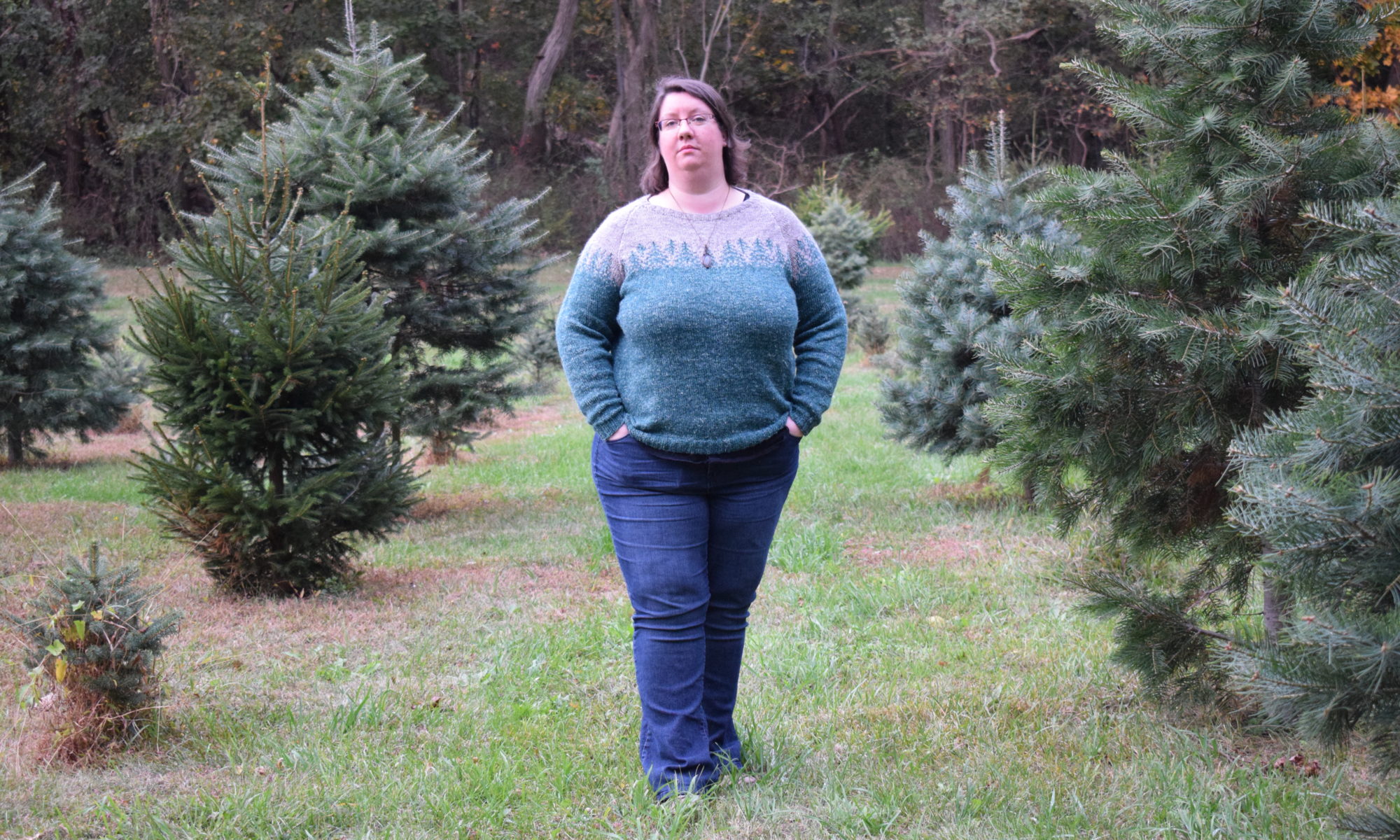
That is a gorgeous jumper and it looks really great on you.
I was intrigued by the crochet seams. It’s my seaming that lets me down terribly for both crochet and knit, so I usually avoid anything with seams. I need to look into how to do crochet seams for knit items.